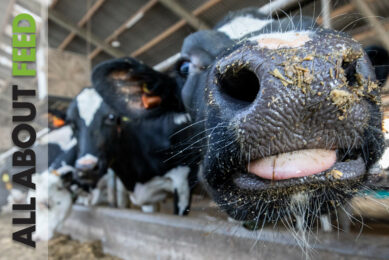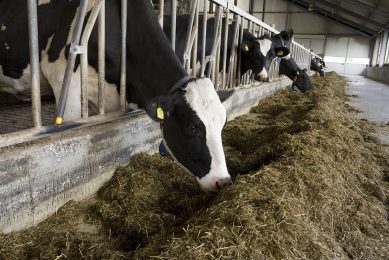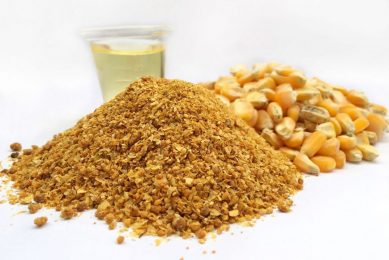DDGS about to be affordable and attractive
Feeding distillers dried grains is not yet a practical option for Midwestern livestock producers, but by the end of summer it will be, says a Purdue University specialist.
“Right now, distillers dried grains with solubles (DDGS) are too expensive
when considering nutritional value, transportation and storage to substitute as
a feed ingredient for most of Indiana’s livestock industries,” Purdue Extension
swine specialist Brian Richert says in a recent Purdue report. “But as more
ethanol plants come into production, competition and an effective pricing system
will be created, which will increase demand and utilization on the livestock
side.”
Ethanol increase
Currently, U.S. ethanol
production is at 5.16 billion gallons, rendering 32.2 billion pounds of DDGS.
Some estimates show that by the end of 2007, the United States will be producing
10.67 billion gallons of ethanol, putting 66.7 billion pounds of DDGS on the
market, Richert says. “This increase in ethanol production will possibly make
DDGS an affordable and attractive option, especially to beef and dairy
producers,” he says.
Storing and handling
Once a producer
decides to feed distillers grains, they need to look at their storage and bin
capacity, Richert says. Storing and handling DDGS is challenging. The product
flow characteristics and handling characteristics make it difficult to handle in
some of the feed systems, he says.
If storage capacity is an issue, talk
with a neighbour and consider splitting a load. Feeding distillers grains
creates an opportunity for local co-ops to provide a service to smaller
producers, where they would have the distillers grains on hand and deliver
smaller tonnages for producers to utilize. If the operation does not have the
storage capacity, producers should consider whether it is worth the investment
to add storage to have the opportunity to use DDGS and other future by
products.
Related links:
University of Purdue
Dossier AllAbout Bio Energy
To receive the
AllAboutFeed newsletter click here.











